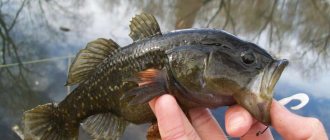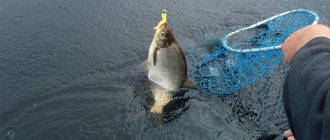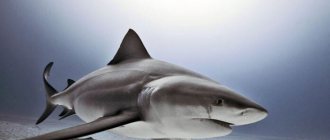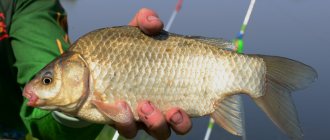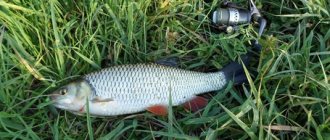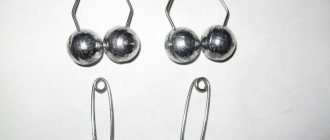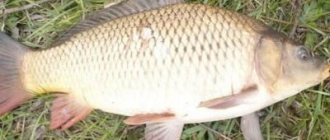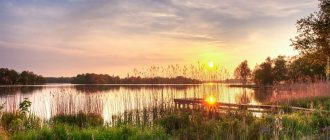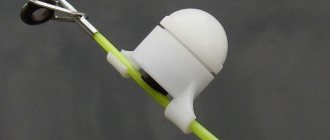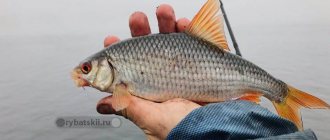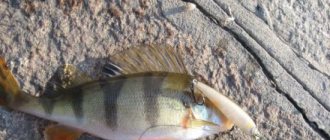To understand and comprehend the secrets of successful fishing, a fisherman’s knowledge must be versatile. You need to be an observant person, passionate, and at the same time self-possessed, collected and resilient. In addition to the scrupulous preparation of expensive or not so expensive fishing rods, branded spinning rods, bait, live bait, feeding, in a word, fishing gear, you will need basic knowledge, if not an ichthyologist, then at least a naturalist.
You will have to understand what atmospheric pressure is, water temperature, current, direction and strength of wind, degree of lightness and humidity, precipitation, period of year, day, etc. And how these natural factors affect the amount of your catch! It will not be superfluous to arm yourself with knowledge about the lifestyle, habitat, habits and preferences of the fish you are interested in, with the help of literature and the Internet.
Spring is the time when all the nature around comes to life, so for fish this is the time of Renaissance. Some are waking up after hibernation, others are already actively searching for food and a favorable place for spawning. Moreover, sometimes fish make spawning migrations, covering tens, hundreds, thousands of kilometers, because each type of fish requires individual factors for reproduction, such as the level of bottling, water temperature, its flow and transparency. The spawning period usually occurs in early spring!
Every angler must keep in mind that during the spawning period, recreational fishing is permitted exclusively from the shore, within populated areas, with a float rod, with a donkey or a spinning rod, and not in spawning areas.
How to catch
But May, according to avid fishermen, is the most favorable time for fishing! This is due to the fact that the water, having warmed up sufficiently, promotes the growth of bottom vegetation, the day increases and the fish begin their “post-spawning” meal. This is a good time to go pike fishing. It is found in clean and fast waters, instantly reacts to temperature, and is caught with a medium-length spinning rod, preferring metal spoons or small “lifeless” fish as bait.
When going for carp, arm yourself with a fishing rod or spinning rod; half-raw potatoes, cut into cubes, are suitable for bait. When fishing for pike perch in May, a dark-colored “vibrotail” bait with silver scales or a “wobbler” is suitable. You will need a medium spinning rod with a soft tip and shallow water. Catfish is a nocturnal fish; in May, it moves from wintering pits to shallow water and, like its nocturnal competitor, the owl, loves mice; even a toy fish will do as bait.
Basics of fishing
To help the novice fisherman
How to make a simple donka for a beginner
It is caught on a short spinning rod with strong fishing line. Bream needs to be fed with steamed pearl barley; it is caught on a long fishing rod with bait in the form of a worm or maggot. Perch is found in overgrown bays, catches on a spinning rod or fishing rod, and catches well on crankbaits, wobblers, and spinners.
Tip 3. Choosing fishing tactics
Both the float tackle and the feeder - you need to be prepared for any development of the situation! That day I had both a bottom and a float rod in my arsenal, but the fishing location I had chosen and the presence of vegetation in it did not allow me to effectively retrieve it.
Despite the fact that the bottom rod showed greater efficiency in this situation, allowing me to catch the first barbel with its help, I believe that, in general, the float rod is more effective in most situations. The main merit here lies in the possibility of a natural presentation of the hook with bait, thanks to which the fish will not be wary and the bite will not be long in coming.
We are not even talking about catching fish - sometimes it is enough to understand in which horizon the fish is located and where the bites are occurring in order to accurately determine the location that is promising for fishing and pick up the key to the fish. In this situation, a voluminous, clearly visible dome-shaped balsa float is the best solution that allows you to clearly control the wiring process and timely notice a bite.
Another trick is to use bait correctly. If you are fishing near aquatic vegetation, snags, trees and other strong places, you should try to lure the fish into clean waters that are beneficial for the angler using food. Otherwise, immediately after the bite, the trophy will rush for cover - a cliff is almost inevitable! An alternative way to develop the situation is to force the fishing, using coarser and more powerful gear and not allowing the fish to go into the snags, but this does not always work.
Weather Tricks
Note for the fisherman are some patterns derived from time and experience!
When the sun is shining well, the fish usually goes deeper, it looks for shade and hides in the algae, and when it’s cloudy, it swims to the shallows, but itself is on the surface.
The higher the water temperature, the more intensely the fish feeds and processes food better, but if it’s hot, it becomes semi-active.
Remarkable bite is observed when it rains, this is caused by the entry of oxygen into the reservoir, a decrease in temperature and the penetration of food microelements into the water.
The wind also affects the bite, it creates waves that wash away silt from the coastlines, it washes away small things, crustaceans, beetles, and in windy weather, due to the mixing of water layers, the water is enriched with oxygen, causing the fish to be active and hungry.
The fish's food intake increases when there is a sharp jump in pressure, when the pressure is low, which is stable, or when it drops rapidly, this happens before a storm.
The most active state in fish is observed when the water level increases, called flooding.
It should be remembered that fish has organs of smell, taste and touch.
Fishing Features
When catching heavy specimens, you need to choose the right place for fishing. You need to select tackle, bait and groundbait.
How to choose the right place
The most suitable reservoirs for catching trophy crucian carp are:
- Medium-sized flowing and stagnant lakes.
- Bays and oxbows of rivers.
- Large reservoirs.
- Cascades of small marshy lakes.
- Peat digs.
- Stakes and large ponds.
In such reservoirs, large crucian carp prefer to stay at a great distance from the shore for most of the year in places with a muddy bottom, a depth of up to 4 meters, and a large amount of algae and aquatic vegetation. The fat man also loves heavily snarled areas with rubble of trees that have fallen into the water and flooded bushes. An exception to this rule is spring, when weighty fish come to shallower areas overgrown with reeds and sedges to spawn. However, at this time the fish practically do not feed and it is impossible to catch them.
Large specimens of crucian carp are practically never found in reservoirs with a weak food supply, a hard sandy or clay bottom, and a large number of predators - perch, pike.
Tackle and bait
Weighty specimens bite on baits of both animal and plant origin.
Recommended reading: Fishing for trout using feeder gear
For bait, large fish prefer dung worms, a bunch of bloodworms, white maggots, and shitik. In bodies of water near which there are meadows, it even catches a grasshopper quite well.
Among the variety of plant baits, large specimens are more willing to bite on:
- Dough made from wheat or corn flour;
- Pea porridge “Mastyrka”;
- Barley;
- Undercooked potatoes"
- Corn.
Somewhat less often, large fish take semolina and crumbs of white or black bread.
It is best to catch large crucian carp using the following gear:
- Float fishing rod - a light carbon fiber 5-6 meter rod with a small or spinning reel, equipped with a monofilament line with a cross-section of 0.2-0.25 mm, a short leash with hook No. 12-14. A spindle-shaped float with a load of 2 to 5 grams is used as a signaling device in such gear.
- Match tackle is a rigid rod 3.6 meters long with a test weight of up to 30 grams with a special match spinning reel size 3000, equipment consisting of a monofilament line 0.16-0.18 mm thick, a leash 30-40 cm long. For such tackle they use special match floats with a load from 8 to 16 grams.
- Feeder tackle - a rod 3-3.6 meters long, a spinning reel with a size of 3000-4000, a braided cord with a thickness of 0.12-0.14 mm or monofilament with a cross-section of 0.22-0.25 mm. When catching trophy crucian carp, feeder rigs are used - paternoster rig, Gardner loop, inline rig.
- Zakidushka - a crocodile-type rod with a spinning reel size 3000, wound fishing line with a cross-section of 0.25-0.27 mm, a sliding flat sinker weighing 60-80 grams, a 30-40 centimeter line leader with hook No. 10-12
Tackle with long rods is used on large bodies of water. Short and less long-range - on medium-sized bays, lakes and ponds.
Lure
When catching weighty specimens, both purchased specialized crucian carp baits, for example, from RS, Traper, Sensas, Vabik, Dunaev, and homemade mixtures are used as bait.
Recommended reading: How to catch tench with a fishing rod
Homemade groundbait is prepared by mixing breadcrumbs, cake, boiled barley, steamed peas, and millet in equal quantities. In spring and autumn, cut worms and crushed bloodworms are added to the bait mixture. Maggots are not added to the bait, since the motile larvae accumulate at the bottom of the container in which the mixture is prepared and very rarely end up in the feeding balls. Clay and soil from molehills are used as ballast for bait used when fishing with float gear.
Crushed garlic, ginger, honey, and heart drops (Corvalol, Valocordin, Valerian) are used as flavorings added to plant baits and bait.
People's secrets
In clear water the fish goes deeper, in cloudy water it bites.
The sun and moon have a huge influence on fish behavior and their way of life.
Some fish live in warm waters, such as catfish and carp, while others live in cooler waters, such as perch and pike perch.
Those who hunt predators, know that predatory fish, when getting food, use the direction of the current, which, with its natural power, picks off food along the way and drives small fish.
How to catch big fish?
The name is intriguing, isn't it? This question interests every fisherman, because catching a large fish is always a joyful event that will be remembered for a lifetime. The thing is that large fish are caught very rarely. Especially in our time, when in principle there are few large animals left and almost every individual has already been “pricked”.
Although there are few large fish left, they still exist. And it can be caught. Many anglers ask the question: “Why am I only catching small fish?” The answer to this question is very simple: because from the very beginning of fishing you focus on the little things. Those. you use such fishing methods and such baits that you sharply reduce your chances of catching something big. In addition, the angler chooses the wrong place to fish. Here's an example: a spinner fishes with twitching wobblers up to 10 cm long with a light stick in the coastal zone. He catches a bunch of squinting and “kilukh”, and then, upon arriving home, he says: Ehhh, it’s a pity, there was nothing big. Well, that’s right, where do large fish come from in the coastal zone? And why would a large fish attack such small wobblers? In principle, in the shallow water zone it is possible to catch trophy specimens, and a seasoned pike can grab a voyage of any size, but the chances of this are low. If you want to catch big fish, you need to catch them accordingly. Here's more about this.
And we are all “micro-crushing” =)
First of all, let's define what we call big fish. For some, a 7-kilogram pike is average, but for others, a 3-kg pike. - this is already a trophy. It is absolutely clear that it is impossible to judge objectively here, but it is still necessary to come up with some kind of standard. Let's agree this way: pike more than 5 kg, pike perch more than 4 kg, and perch more than 1 kg. - this is already a large, trophy fish. We will build on these numbers.
Where to look for a trophy predator? In my opinion, there are two types of places where big fish like to hang out. The first is deep holes in the river bed. Such places are favored only by mature, strong fish. If there is a deep hole in the riverbed, you can be sure that there will be large fish there. The only question is how to catch her. The second promising place is vast shallow bays overgrown with grass. Large pike always hang out in such places in the summer. Humpback perch can also come here. It is much easier to lure a large pike in a large bay than in a hole. But such fishing does not last long: somewhere from May to early September. And the pits work throughout the entire period of open water.
According to many trophy hunters, there are 3 options for catching large fish. On the riverbed and pits, fishing with heavy jigs and trolling with deep wobblers will be effective. If we are talking about fishing in shallow bays, then this is jerking. As you can see, the artillery is very heavy. Naturally, you need to use the appropriate gear. By the way, I recommend using baitcasting reels and not “meat grinders” to catch large fish. They are much more convenient to fight with large fish. And this applies not only to jerk fishing, but also to jig fishing, as well as trolling. I would even say that if you are going to catch big fish with a heavy shore jig, then a multiplier will be preferable for you. The sensitivity with it is simply amazing!
Targeted catching of large fish requires enormous patience. I have a good fisherman friend who has been purposefully hunting for predators for three years now. So guys, what am I going to tell you? If out of 5 fishing trips, I get 100% away from zero all five times, then out of five fishing trips, 1 or 2 of him are successful. But on the other hand, I have small pike perches and small perches, and he has “mothers” of 4-10 kg each, and pike perches about 5-6 kg in weight. He spends the whole day fishing in order to catch (or not catch) just one fish. It happens that he monotonously fishes one hole all day long: entrance, exit, casts at different angles, experiments with retrieves and baits. And all this during the whole day! You need a huge amount of patience...
I compare purposeful hunting for large fish to hunting a trophy animal. You need to grow up to this. So far, I’m only planning to become a trophy fisherman (I don’t purposefully catch big fish - I wrote the article from the experience of communicating with big fish hunters), but I feel that I haven’t grown up to that yet. I also want to indulge in ultralight and tweet some grass. But I think that in 2-3 years, when catching little things starts to make me sick, I’ll switch to trophy fishing.
